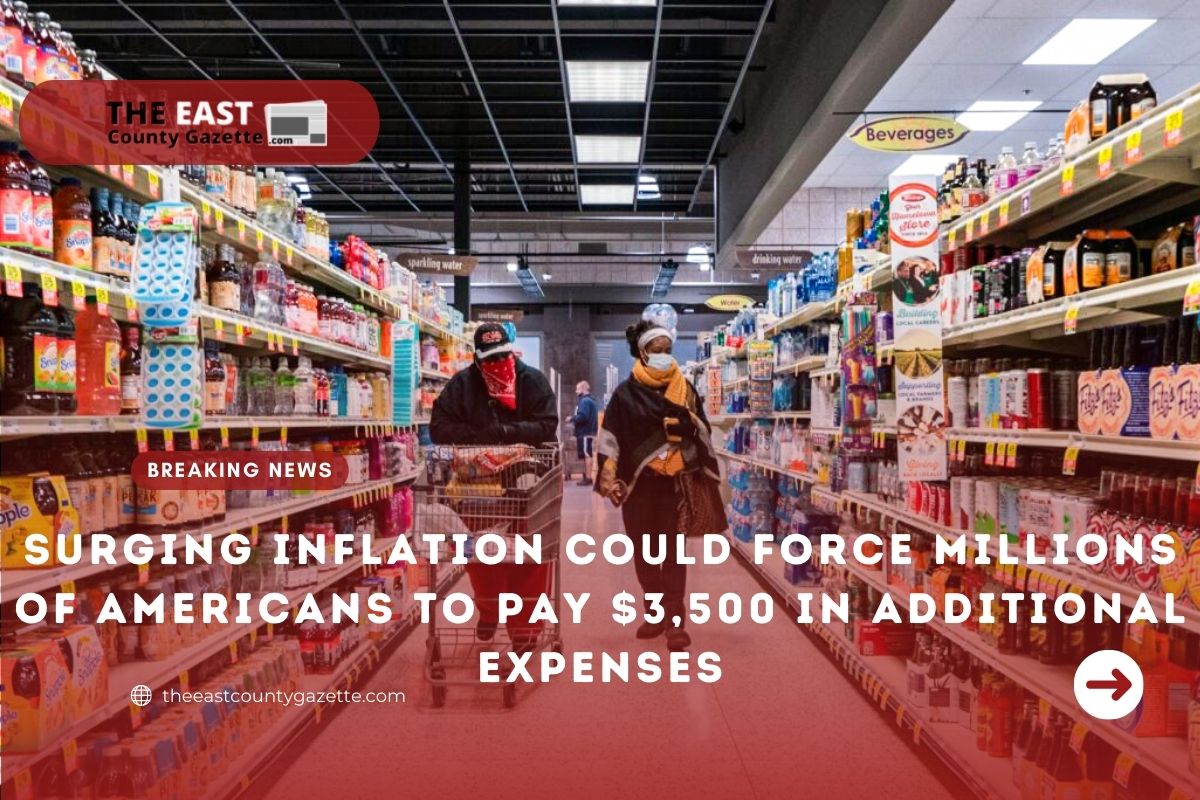A Penn Wharton University of Pennsylvania Budget Model (PWBM) analysis published on Wednesday estimates that rising inflation will add more than $3,000 to Americans’ expenses this year.
According to PWBM, a nonpartisan research-based initiative, to achieve the same level of consumption of goods and services as in 2019 or 2020, the average American household will have to spend around $3,500 more in 2021.
Additionally, PWBM estimates that households with low incomes spend a greater proportion of their budgets on goods and services that are more susceptible to inflation. In addition, the report states that people with low incomes will have to pay roughly 7 percent more for these items and services. Meanwhile, it stated that a household with a high income would have to pay about 6 percent more.
In order to determine how much price changes increase household expenditures, PWBM relied on the Consumer Expenditure Survey (CE), a nationwide household survey conducted by the Bureau of Labor Statistics, and the Consumer Price Index (CPI) for November 2021.
According to their analysis, increased costs are based on household consumption patterns remaining the same as in 2020 and 2019.
The bottom 20 percent spent more on the food of $309, energy of $761, shelter of $476, other commodities of $390, and other services of $224 between November 2020 and November 2021, for instance.
Read More: Stimulus Package Latest Update: The Last 2021 Stimulus Check to Deliver Tomorrow
Additionally, households with higher incomes spent $961 on food, $1,824 on energy, $1,607 on shelter, $2,144 on other commodities, and $1,100 on all other services.
As such, based on 2020 total consumption expenditure data, it could mean that the lowest 20 percent of income earners saw a 6.8 percent increase in their consumption expenditures per household to $2,160, while households in the top 5 percent saw a 6.1 percent increase to $7,636. A 6.8% increase was also recorded for middle-income earners, or roughly $4,351.
“Since higher-income groups had a bigger increase in expenditures in all categories, they also saw a bigger increase in total expenditure,” the analysis indicated. “However, because of variation in the composition of consumption bundles, we find that higher-income households had smaller percentage increases in their total expenditure. Higher-income households spent relatively more on services, which experienced the smallest price increases.”
“On the other hand, lower-income households spent relatively more on energy whose prices had large increases,” the analysis developed.
Following the Federal Reserve’s announcement on Dec. 15, the agency will end its stimulus program earlier than expected as inflation remains high.
As a result of the tapering, the central bank will reduce its monthly bond purchases to $30 billion per month instead of $15 billion announced last month; the Fed predicts the stimulus will stop in March, paving the way for interest rate increases in the first half of 2022.
The Fed now anticipates three quarter-point rate increases in 2022, plus three more in 2023, a significant change from the September meeting.
“In light of inflation developments and the further improvement in the labor market, the Committee decided to reduce the monthly pace of its net asset purchases by $20 billion for Treasury securities and $10 billion for agency mortgage-backed securities,” the FOMC report states.
“Beginning in January, the Committee will increase its holdings of Treasury securities by at least $40 billion per month and of agency mortgage‑backed securities by at least $20 billion per month,” Fed officials asserted.
Jerome Powell, chairman of the Federal Reserve, has said the decision to end bond purchases quicker than anticipated is the result of “elevated inflation pressures” and strong labor recovery.
“Supply and demand imbalances related to the pandemic and the reopening of the economy have continued to contribute to elevated levels of inflation. Overall financial conditions remain accommodative, in part reflecting policy measures to support the economy and the flow of credit to U.S. households and businesses,” Powell explained.
Read More: Biden Lied? Student Loan Forgiveness Isn’t Happening Anytime Soon
On Dec. 15, the House voted to raise the debt ceiling by about $2.5 trillion to close to $31 trillion until 2023, just in time to avoid what could have been an economic crisis just prior to the Treasury’s deadline.
The United States currently owes $28.9 trillion to the federal government, and this is the largest debt ceiling increase in history.

